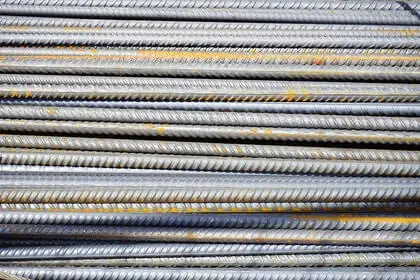Thermal conductivity is the term that describes the property of a material to conduct heat. It shows how a material absorbs heat from areas of high temperature and moves it toward areas of lower temperature.
With all of the different options out there, it can be difficult to decide which one would work best for your needs.
Materials with high thermal conductivity are used in many items such as cookware, heat exchangers, and heat sinks. They are used in areas where you need to move and or dissipate heat.
On the other hand, metals with a lower rate of heat transfer are also useful where they can act as a heat shield in applications that generate large amounts of heat, such as car engines. Some typical examples are aluminum and copper.
Which metal conducts heat the fastest
Let’s look at a ranking of heat-conducting metals and metal alloys. This will be in the order of lowest to highest average thermal conductivity, in Watts/meter-K measured at room temperature:
- Stainless Steel 16 W/(m-K)
- Zinc 30 W/(m-K)
- Lead 35 W/(m-K)
- Carbon steel 51 W/(m-K)
- Wrought iron 59 W/(m-K)
- Iron 73 W/(m-K)
- Aluminum Bronze 76 W/(m-K)
- Copper brass 111 W/(m-K)
- Aluminum 237 W/(m-K)
- Copper 401 W/(m-K)
- Silver 429 W/(m-K)
As you can see, aluminum is one of the best heat conductors of all metals.
It also has one of the lowest costs per foot. While it’s very common in cooking today, aluminum was not used at all just a little over 100 years ago.
The metal with the highest thermal conductivity is Copper. The unique thing with copper is that it is much cheaper and more available than silver, which is the best metal of all for conducting heat. It is even better than silver if you also take corrosion resistance into account.
Copper’s thermal conductivity of 401 W/mK, along with a low cost and ease of shaping makes it the best choice for applications that require efficient heat transfer.

Aluminum also has low thermal conductivity, but because it is so much cheaper, it has become the material of choice for applications that involve heat transfer.
This includes cooking utensils and cookware, heat exchangers in air conditioners, power transmission lines, tubing for oil wells, building construction materials such as roof tiles and wall panels, car engines and radiators.
Aluminum is one of the best metals to use if you’re trying to create an efficient heat sink. It has high thermal conductivity and low cost, making it very desirable for devices that need to dissipate or move large amounts of heat.
Thermal conductivity of plastic vs metal
Metal often works as a better thermal conductor than plastic because of the presence of conduction electrons. These electrons are able to spread the heat energy around the system.
As shown in the table above, metals have conductivities in a range from tens to hundreds of watts per meter Kelvin (W/m-K).
Most metal cans are made of aluminum, which has a thermal conductivity of 237 W/(m⋅K). Plastic, on the other hand, has a very low thermal conductivity. For example, polyethene has a thermal conductivity of 0.021 W/(m-K).

This means that it will take 24 times longer for heat energy to diffuse across a plastic package than it would through an aluminum can.
Thus, metal cans are better conductors of heat than plastic and will cool down faster.
When you want to use a material for thermal insulation or transfer, it’s also important to know how well it can dissipate heat energy.
Some materials such as aluminum and copper have high thermal diffusivities, so they can efficiently spread out the heat energy to their surroundings.
What metal holds heat the longest
Materials like tantalum carbide and hafnium carbide materials allow spacecraft to withstand the extreme heat generated from leaving and re-entering the atmosphere.
These materials can withstand scorching temperatures of nearly 4000 degrees Celsius. About half of the metal mined in the world is used for making heat-resistant materials such as these.
Metal is a good thermal conductor and can hold heat better than most materials
Depending on the metal, a specific amount of heat energy may be able to stay in it for long periods of time before being released into its surroundings.




